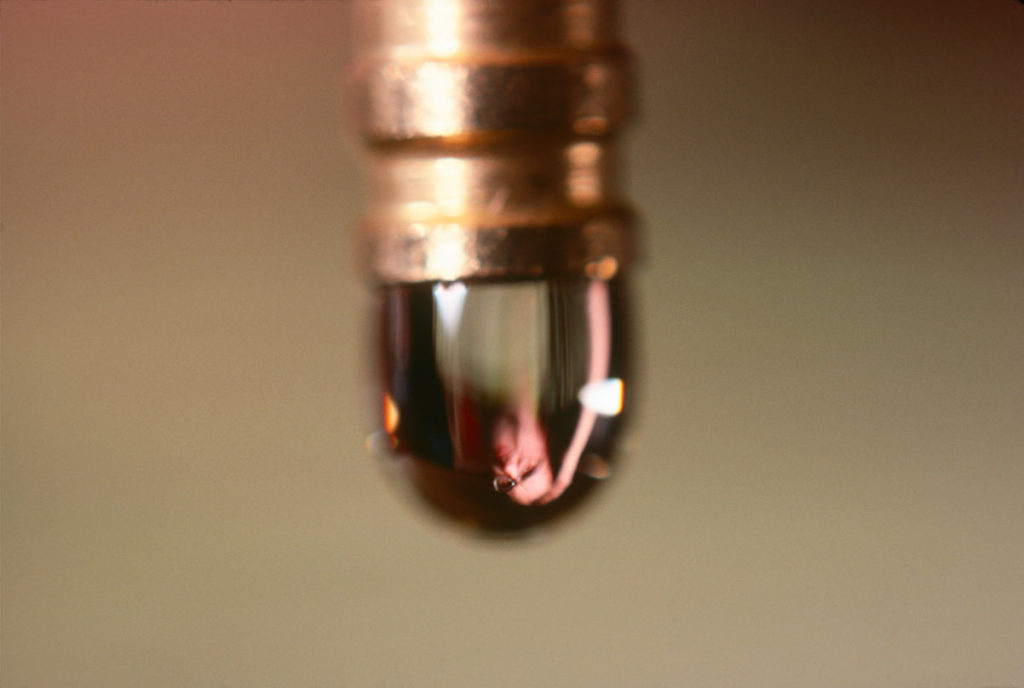
Currently three venues across Philadelphia are exhibiting the work of Bill Viola. Two of the locations, the Fabric Museum and Workshop and Pennsylvania Academy of the Fine Arts, Museum respectively, pulled work from their permanent collections. While the Barnes Foundation, has a specially curated show titled, “I Do Not Know What It Is I Am Like: The Art of Bill Viola” by John G. Hanhardt. In each instance the Bill Viola Studio, supervised by his wife Kira Perov who also represented Bill as he is not well and unable to travel, played a hands-on roll in the installation processes, some more complex and nuanced than others. The work, spanning from 1976 through 2009, occupies four galleries at the Barnes and also includes a rarely seen feature length film from 1986, that will have various screenings throughout the duration of the exhibition. While all of Viola’s work has been exhibited previously, the close proximity of each of these art venues and the relative walk-ability of Philly as a city, gives visitors the opportunity to see all three shows in an afternoon.
What does it mean to revisit Bill Viola in 2019? The artist started using video as his medium of choice in the mid-1970s. The studio still refers to the work as “ videotapes,” as celluloid was the medium of choice utilized as part of his early practice. Since technology has evolved, digital means have allowed for a different level of accessibility for video-making as well as diminished attention spans. Bill Viola’s oeuvre is the antithesis of a quick moving Instagram culture. Above all it has requirements. First and foremost is that it calls for —demands— patience. Many of his works while filmed in mere minutes, have been incredibly slowed down, each movement a painterly gesture, delayed, stretched, purposeful. Secondly, Viola often references paintings from antiquity. Having looked towards artists such as Pontormo and Vermeer, it’s not necessary to know art history when experiencing the work, but having familiarity with this inspiration only broadens the dimensional relationship and possibilities one can have in a fully immersed experience.
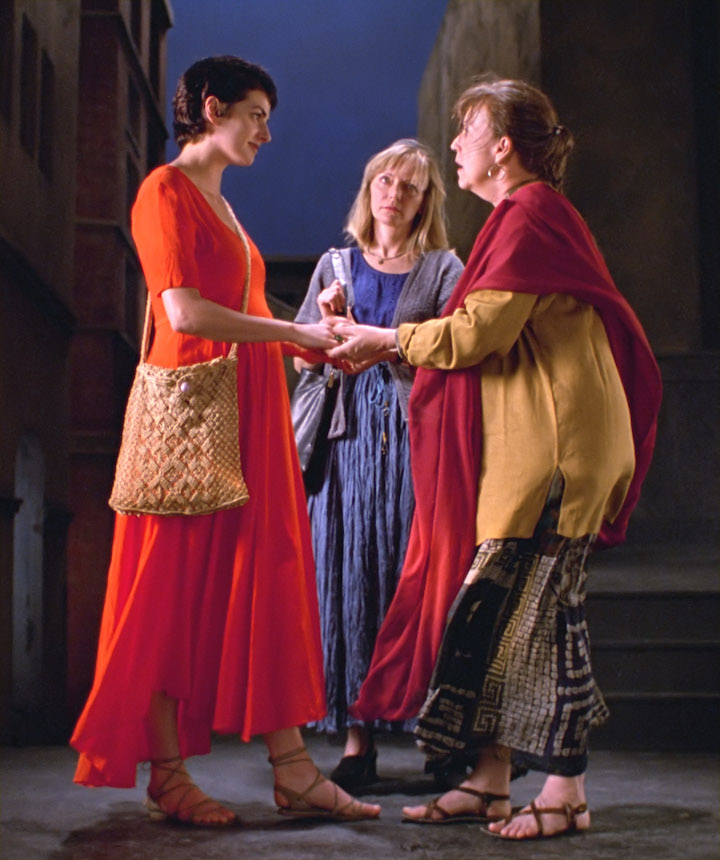
In particular, three of the works on view, one at the Barnes, another at the Fabric Workshop and Museum, and a third at the Pennsylvania Academy of Fine Art were originally commissioned for the Biennale di Venezia, shown in 1995 and 2007 respectively. The first I will mention is installed at The Barnes and loosely based on The Visitation by Pontormo. Viola’s work, called The Greeting (1995) replaces the painted/rendered figures of The Virgin Mary, St. Anne and St. Elizabeth, removing the fourth figure, with actresses who meet in a similar fashion as the religious icons, on a street. In the video, the gesture, so easily imagined in the painting, is incredibly slow. The duration stretches, wind blowing/shifting their voluminous garments, the act of leaning in for a hug or kiss on the cheek, delayed and charged with anticipation and expectation. In a deep, nearly inaudible whisper, one of the women states in Viola’s work, “I need to speak to you, can you help me?” Having experienced The Visitation in Italy and also more recently at the Morgan Library, The Greeting somehow dynamically transports the painting to another time, much closer to our own. It is an easy highlight across all three venues.
Another highlight is Ocean Without A Shore (2007). Currently the only work of Viola’s on view at PAFA, it was initially shown at the Church of the Oratorio San Gallo, not far from San Marco during the Biennale and is a three channel video. Delving into the mystical realm of life, death and afterlife, “Ocean Without A Shore” is meditative and hopeful, even if melancholic work. In the piece, which lasts 90 minutes, various figures are seen through a film of cascading water. They start walking towards the camera, growing as they approach the lens and the viewers present. First in a static black and gray, the figures slowly walk towards the screen gripping the viewer with anticipation until the body, crosses from one side to the other. It’s almost as if the figure is a memory, or a ghost, stuck in purgatory. Each character is given a second chance once they cross the threshold (in technicolor no less) to reside amongst the living. They all pause, looking at the camera, viewer, but decline in favor of returning through the water curtain, often longingly glancing over their shoulder as if to say, “I’m sorry, you will be ok.”
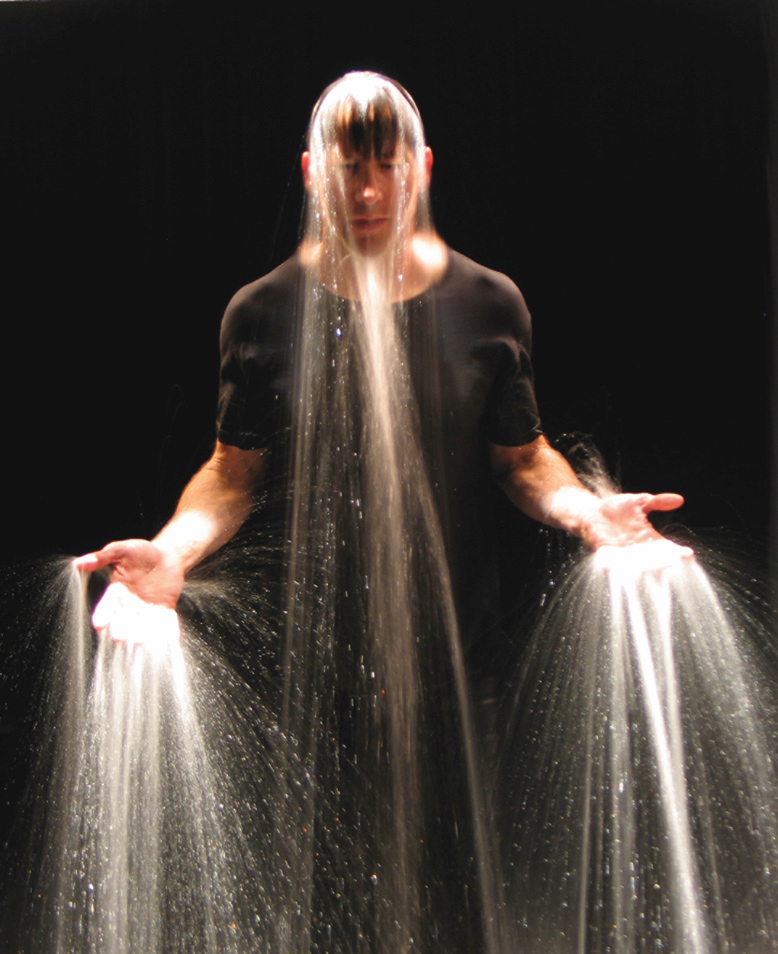
This work curated at PAFA by Jodi Throckmorton, Curator of Contemporary Art, is something I visited in 2007 as a Masters student at NYU. It hit me in the light of 2019 with particular nuance, clarity and artistry. In fact, as an older woman approached, emerged through the cascading water, and returned, (someone who may have been the artist’s mother) I thought of my Grandmother who is 94, with us but aging. I also thought of my cousin John who passed away in January of this year. Through the fortitude of each of Viola’s figures, it’s as if they tell us sans words but language that is evident though gesture, “If I could stay I would….” Upon this realization in the darkened room, a tear slowly slid down my right cheek. When I later shared this with a friend who works at the Fabric Museum and Workshop, she divulged that a similar experience happened to her as well. This is a strength of Bill Viola. He makes work that is beyond language, beyond emotion and yet inevitably filled with both. However rather than be leading or didactic, his personal vision and spiritual exploration allows for each viewer to have their own, unique experience.
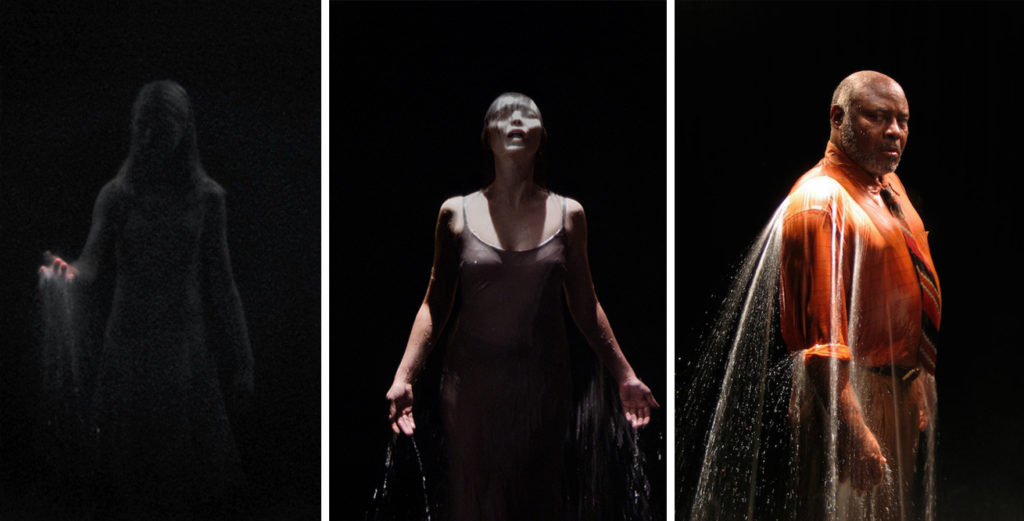
The most unique and exploratory videotape is at the Fabric Workshop and Museum. Titled The Veiling (1995), the work was made while Viola was in residence at the Fabric Workshop. Viola utilized layers of a sheer Italian cloth often used for curtains, hanging in succession, allowing for a phantasmagoric projection to pass through each layer. Entering the room is in fact otherworldly as the dimly lit fabric billows in the breeze made by human gesture alone. On one side a woman is projected, while on the other a male is projected. The goal of the piece is for the two figures to eventually meet. The vision, is muddy. I spent time on each side of the work and never saw an actual crossover of bodies. Here the screens create another level of distance between contact with the viewer and with the bodies projected. As with most of his work, there is a sense of loss, missed connection. Made for the 46th Biennale di Venezia, The Veiling feels different somehow…and maybe that is because it leaves his usually occupied two-dimensional space in search of comfort within the realm of three-dimensional space.
All of Viola’s work that I’ve experienced up until this point, save for the 1976, “He Weeps for You” at The Barnes, has found a home in two-dimensions. The earliest work on view, “He Weeps for You,” is also one of the strongest. The piece, while still projection at its core, happens in real-time. How it is realized, is through a single drop of water, programmed to cascade onto a flat, round drum below. As the drop hits the drum, a sound emanates and fills the room. It corresponds directly to a projection of the drip, larger than life, on a nearby screen, reflecting all those present. Unlike any of Bill Viola’s other work, it makes sense to see what he was thinking about in the early stages of his career, in this case: sound, slow-movement, and bodies.
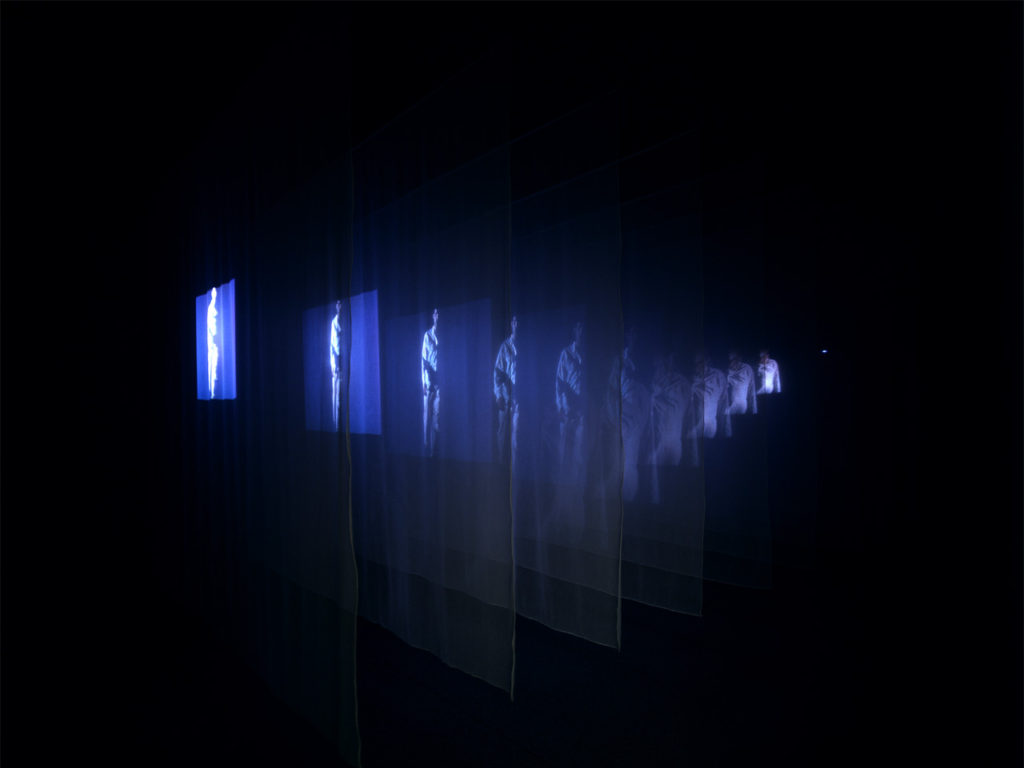
These three exhibitions reveal some of the best of what Bill Viola has made over the duration of his career. In timing that couldn’t be more perfect, audiences need to pause, to step away from the immediacy of the iPhone, and instead reflect upon something that is so much bigger —the semiotics of mortality.
“I Do Not Know What It Is I Am Like: The Art of Bill Viola” is on view at The Barnes Foundation until September, 15, 2019
“Bill Viola: Ocean Without A Shore” is on view at the Pennsylvania Academy of the Fine Arts, Museum, until December 31, 2019.
“Bill Viola: The Veiling” is on view at the Fabric Workshop and Museum, until October 6, 2019.
Katy Diamond Hamer is the Founding Editor of Eyes Towards the Dove a platform on contemporary art and culture. She writes for several print and online publications, lectures and is a content curator. For more of her writing and art world travels, follow her on Instagram @katyhamer
